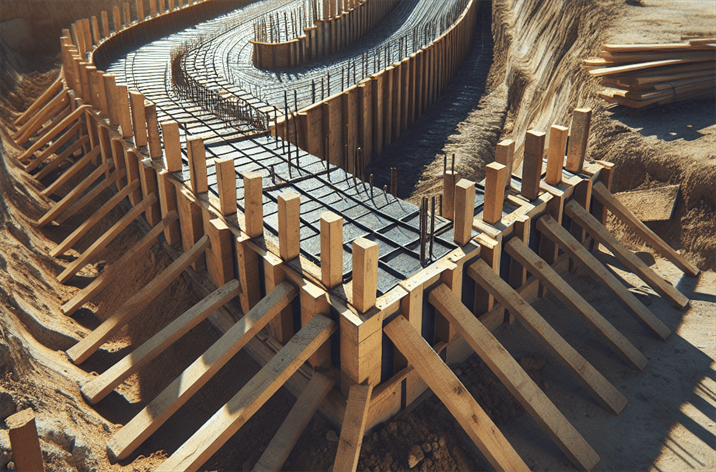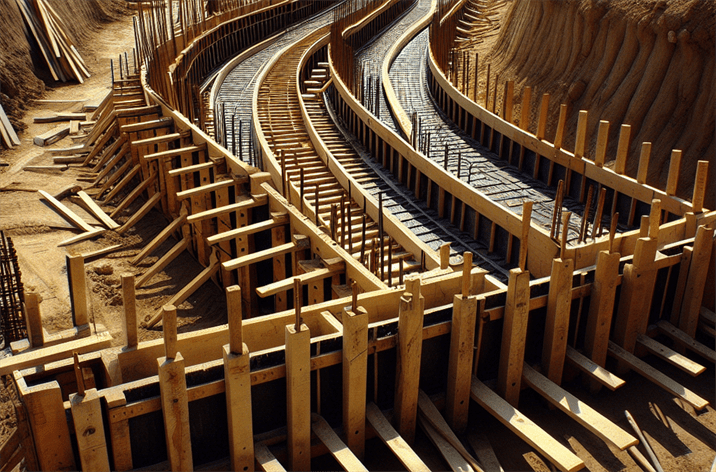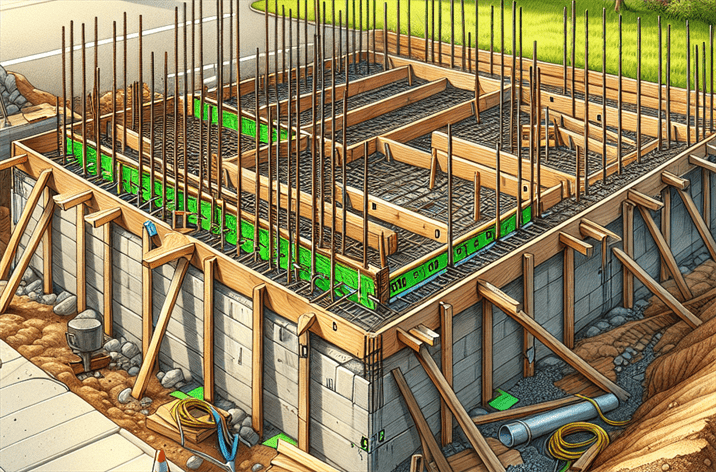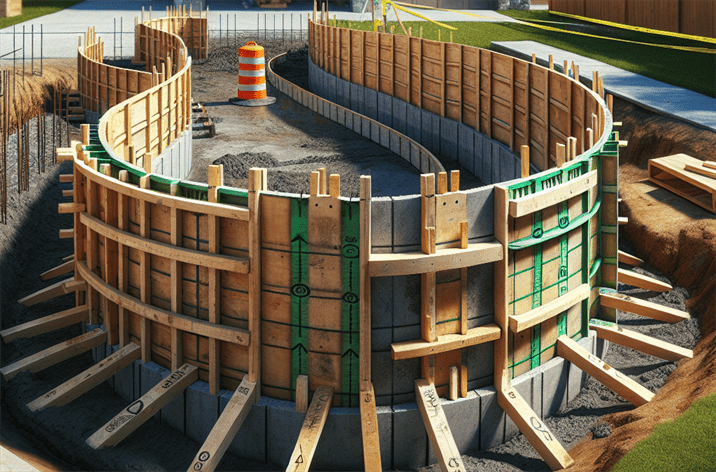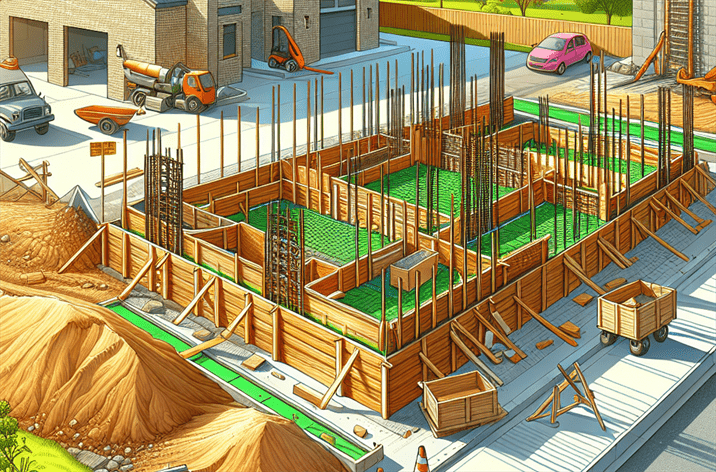# Stakes and Lath for Construction: The Essential Guide
## Introduction
Did you know that the precise use of **_stakes and lath for construction_** can significantly enhance the accuracy and efficiency of building projects? These seemingly simple tools play a pivotal role in modern construction, ensuring that everything from landscaping to large-scale infrastructure projects is executed with precision. In an industry where the slightest miscalculation can lead to costly delays or structural failures, stakes and lath are indispensable.
Historically, the use of stakes and lath dates back centuries. Ancient builders relied on similar tools to outline structures and maintain alignment, showcasing their timeless relevance. Today, innovations in materials and design have further elevated the importance of these tools, making them more durable and versatile. Recent trends in construction technology integrate these elements into sophisticated project management systems, ensuring that each phase of construction adheres to strict guidelines and standards.
In this article, we’ll explore the various facets of **_stakes and lath for construction_**. You’ll learn about their definitions, functionalities, benefits, challenges, and how they fit into the broader context of construction and civil engineering. By the end, you’ll have a comprehensive understanding of why these tools are essential for your construction needs. For a deeper dive into the essential role of these tools, consider exploring our guide on [the benefits of using stakes and lath in construction](https://stansindustrialmanufacturing.com/benefits-of-using-stakes-and-lath-in-construction/).
## What is **Stakes and Lath for Construction**?
### Definition
**_Stakes and lath for construction_** are fundamental tools used to mark, outline, and support various elements during construction projects. Stakes are typically made of wood or metal, and they serve as markers for boundaries, elevations, and layouts. Lath, on the other hand, is a thin strip of wood or other material that provides support for plaster, drywall, or landscaping features. The dimensions of stakes usually range from 1 inch by 1 inch to 2 inches by 2 inches and can vary in height, while lath strips are often around 1 inch wide and ¼ inch thick.
### Historical Context
The origins of stakes and lath can be traced back to ancient civilizations. Builders in Mesopotamia and Egypt utilized wooden stakes to outline their monumental structures. Over the years, as construction techniques evolved, so did the materials and designs of these tools. In the 19th century, the introduction of industrial processes allowed for mass production, making stakes and lath more accessible to builders. The modern era has seen a shift towards eco-friendly materials, with many manufacturers now offering sustainable options that do not compromise on strength or durability.
### The Importance of **Stakes and Lath for Construction**
In recent years, the relevance of **_stakes and lath for construction_** has surged due to several factors. The increasing complexity of construction projects demands precise measurements and clear communication among teams. Additionally, as urbanization continues to expand, the need for effective land management and property demarcation has made these tools indispensable.
#### Stakes and Lath in the Context of Civil Engineering
In civil engineering, stakes and lath are essential for ensuring alignment and elevation during the construction of roads, bridges, and buildings. They assist engineers and surveyors in creating accurate layouts, which are crucial for the safety and stability of any structure. The precision offered by these tools helps mitigate risks associated with construction errors, ultimately saving time and money.
#### Key Players or Contributors
Several organizations and innovations have played a significant role in the development and evolution of **_stakes and lath for construction_**. Companies specializing in construction supplies have invested in research and development to enhance the quality of materials used. Additionally, collaborations between civil engineering firms and technology companies have led to the integration of digital tools for better management of stakes and lath on construction sites. Learn more about how to effectively use these tools in our article on [best practices for using stakes and lath in construction](https://stansindustrialmanufacturing.com/best-practices-for-using-stakes-and-lath-in-construction/).
## How Does **Stakes and Lath for Construction** Work?
### The Mechanics of **Stakes and Lath for Construction**
The effectiveness of stakes and lath stems from their straightforward yet robust design. **Stakes**, typically driven into the ground, serve as reference points for various construction activities. They can be used to outline the perimeter of a building site, mark elevation points, or indicate boundaries for landscaping. **Lath** is often attached to stakes to provide additional support for temporary structures or to create a framework for more permanent installations.
#### Step-by-Step Process
1. **Setting Up Stakes**: Begin by determining the layout of your project. Use a measuring tape and string line to mark out the boundaries. Drive stakes into the ground at the corners and along the edges of your layout.
2. **Attaching Lath**: Once the stakes are in place, lath can be attached to create a grid or framework. This is particularly useful for establishing grades or supporting other materials like plaster.
3. **Checking Alignment and Levels**: Utilize a level or laser level to ensure that the stakes and lath are properly aligned. This step is critical for maintaining accuracy throughout the construction process.
4. **Maintaining Visibility**: To enhance visibility, consider using brightly colored flags or markers attached to the stakes. This helps ensure that everyone on the site is aware of the project’s layout.
5. **Adjusting as Needed**: Throughout the project, it may be necessary to adjust the stakes and lath as conditions change or as the project evolves. Regular checks will ensure that everything remains aligned.
#### Applications in Modern Construction
Modern construction projects utilize advanced surveying techniques alongside stakes and lath. For instance, GPS technology can aid in the precise placement of these tools, ensuring that every element of the project adheres to specified dimensions. Moreover, the integration of software solutions allows teams to visualize the entire project layout digitally before breaking ground.
### Benefits of Using Stakes and Lath in Construction
The benefits of incorporating **_stakes and lath for construction_** into your projects are numerous:
– **Enhanced Accuracy**: Precise measurements reduce the risk of errors, ensuring that structures are built according to specifications.
– **Improved Communication**: Clear markings help all team members understand project boundaries and layout, fostering better collaboration.
– **Cost-Effective**: By preventing costly mistakes and rework, these tools save time and money in the long run.
– **Versatility**: Stakes and lath can be used in various applications, from landscaping to large infrastructure projects.
## Challenges of Using **Stakes and Lath for Construction**
Despite their many advantages, there are challenges associated with the use of stakes and lath in construction:
– **Weather Vulnerability**: Wooden stakes and lath can be susceptible to damage from harsh weather conditions, leading to potential inaccuracies if not monitored.
– **Installation Time**: Setting up stakes and lath may be time-consuming, particularly on larger projects where extensive layouts are required.
– **Material Limitations**: Depending on the project requirements, the choice of materials can affect the durability and effectiveness of stakes and lath.
To mitigate these challenges, it is crucial to select high-quality materials and implement best practices during installation. For instance, using treated wood for stakes can enhance durability and resistance to the elements.
## Future Trends in **Stakes and Lath for Construction**
As the construction industry continues to evolve, so do the tools and techniques used. Here are some future trends to keep an eye on:
### Technological Integration
The advent of technology is reshaping how stakes and lath are utilized in construction. Innovations such as augmented reality (AR) and virtual reality (VR) are being explored to visualize projects before they commence. This allows teams to plan layouts more accurately, reducing the dependency on physical stakes and lath.
### Sustainable Practices
With growing awareness of environmental issues, the demand for sustainable materials in construction is on the rise. Eco-friendly stakes and lath made from recycled or responsibly sourced wood are becoming increasingly popular. This trend not only minimizes environmental impact but also aligns with the industry’s shift towards sustainability.
### Increased Automation
Automation is another trend that could influence the future of stakes and lath in construction. Automated systems for laying out stakes could enhance accuracy and efficiency, allowing teams to focus on more complex tasks. As technology continues to advance, the integration of robotics in construction is expected to grow, potentially revolutionizing how projects are managed.
### Continued Education and Training
As new tools and techniques emerge, ongoing education and training for construction professionals will be vital. Workshops and seminars on the latest best practices for using stakes and lath can help teams stay ahead of the curve and ensure that they are equipped with the knowledge necessary to succeed.
## Conclusion
In conclusion, **_stakes and lath for construction_** are essential tools that play a crucial role in ensuring accuracy, efficiency, and communication in construction projects. From their historical roots to their modern applications, these tools have proven their importance time and again. As the industry evolves, embracing new technologies and sustainable practices will enhance their effectiveness even further.
By understanding how to properly use stakes and lath and staying informed about the latest trends and best practices, construction professionals can maximize their project outcomes. Whether you are a seasoned contractor or just starting in the field, leveraging these tools will undoubtedly contribute to your success.
For a comprehensive guide on choosing the right stakes and lath for your specific construction needs, check out our article on [best stakes and lath for construction purposes](https://stansindustrialmanufacturing.com/best-stakes-and-lath-for-construction-purposes/).

